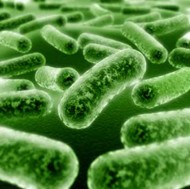 HPV Virus |
Vaginal Cancer PreventionContents • Can I Prevent It? |
Return To Main Article |
Can I Prevent It?
As the exact causes of vaginal cancer is not known, prevention is not always possible. As a result, reducing your personal risk factors, having regular pap smear tests and treating any precancerous conditions is considered the best way to reduce your overall chance of developing the disease.
What Are The Risk Factors? Women who have been infected with human papillomavirus (HPV) are at increased risk of developing cancer of the vagina. HPV is a common sexually transmitted infection (STI), in fact it is estimated that 75 percent of sexually active people (both men and women) will be infected at some time. Infections are more likely in women under the age of 30, although scientists are still not sure why. There are more than 40 variants of HPV and it can affect men and women in the genital area, mouth or throat. Usually however it causes no symptoms and most people do not even know they have it. 90 percent of the infections will clear of their own accord within 2 years but in some cases the DNA of the HPV remains in the cells of the woman's vagina and cervix. This can lead to precancerous changes (vaginal intraepithelial neoplasia or VAIN) and maybe later, even cancer.
Signs And Symptoms Most people will not develop symptoms but in the 10 percent of cases where the body's immune system does not clear the virus it can cause: Genital Warts: These look like a group of small bumps in the genital area. Genital warts can be small, large, raised or flat or shaped like a cauliflower. They can appear weeks or months after sexual contact with an infected partner who themselves may not even have any signs. If untreated warts will either disappear naturally or they may remain or increase in size and number. They are not cancerous. Rarely HPV may cause warts in the throat, a condition known as recurrent respiratory papillomatosis (RRP). Cancer: HPV can lead to cervical cancer as well as other less common types including cancer of the vulva and vagina. How To Reduce Your Chances Of Contracting HPV Age: Avoid starting sex too young. Finding Precancerous Conditions It is believed that the main type of vaginal cancer - squamous cell - starts out as a precancerous condition called VAIN, also known as carcinoma in situ or vaginal intraepithelial neoplasia. VAIN can exist for years before turning into invasive cancer. Ideally if it is discovered at this stage it can be treated and stopped before true cancer starts. However, as vaginal cancer is relatively rare, it is not something a doctor will usually screen for. It is more likely to be discovered during a routine Pap test screening for cervical cancer. According to new guidelines by the American College of Obstetricians and Gynecologists (ACOG) Pap tests are recommended: Before 30: Every 2 years for all women as soon as they become sexually active or from the age of 21 onwards - whichever comes first. Studies consistently show that women who maintain an active lifestyle and healthy weight are less prone to developing cancer. Also, feeding your body the right sorts of cancer diet foods may help to maintain a biological balance. If you smoke, quit. Smokers are 34 percent more likely to die from cancer than non-smokers and studies seem to show that women are more susceptible to the toxins in cigarettes than men. For more details see our article on cancer prevention. Diethylstilbestrol (DES) was the first man-made estrogen hormone and was developed in 1938. In the 1940s and 1950s it was given to women who were considered a high risk for miscarriage during their pregnancy. It was also prescribed to women as a breast cancer treatment and for the prevention of postpartum breast engorgement in women who did not want to breastfeed. After substantial research the FDA issued warnings about the drug in 1971 and finally banned it in 1975 when it was acknowledged that it could cause cancer. It is estimated that 4.8 million American children born between the years 1943 and 1970 were exposed to DES - it's effects are worse if taken in the first trimester of pregnancy. Serious concern started to grow in 1966 when a 15 year old girl was diagnosed with adenocarcinoma of the vagina. It was an extremely rare form of cancer that had never been reported in someone so young. Over the next few years, more and more cases were reported. The common link in all cases was that the mother had taken DES while pregnant. To make matters worse, most of the expectant mothers were not warned of any potential side effects but rather were told they were taking prenatal vitamins. It is expected that 1 in every 1,000 DES daughters will develop adenocarcinoma cancer. What If I Was Exposed To DES? Women who were exposed as a fetus to DES are advised to have annual gynecologic exams from the age of 14 or from menarche (first period), whichever comes first. The exam includes: • Visual inspection of the vagina and cervix. DES Action is an advocate group which acts on behalf of those affected by DES exposure. They are affiliated with the DES Cancer Network and hold regular meetings and offer telephone counseling. Contact Details DES Action DES Cancer Network
|
| Related Articles on Vagina Cancers
For more guidelines, see the following: • Vaginal Cancer Stages and Recurrent Vaginal Cancer Return to homepage: Womens Health Advice |
|
WOMENS HEALTH ADVICE: ABOUT VAGINAL CANCER |